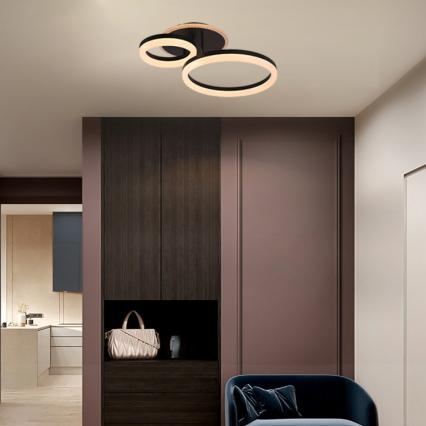Light is everywhere in our life, and we are inseparable from it. When decorating a house, it is very important to choose a suitable ceiling lamp, because the application places of LED ceiling lamps are turned from balconies and corridors to living rooms, bedrooms and other places.



However, there are many kinds of lamps and lanterns on the market now, and it is not easy to choose. Here, let's discuss how to choose a ceiling lamp.
1. Look at the light source
Generally speaking, incandescent lamps have short lifespan and high energy consumption; fluorescent lamps have better energy-saving properties, but high stroboscopic frequency, which will affect vision; energy-saving lamps are small in size and have a longer lifespan. LED lights are small in size, long in life, non-toxic and environmentally friendly.
2. Look at the shape
The shape and style of the ceiling lamp should be in line with the style of your overall decoration. The lamp is originally a finishing touch. The style and grade of the decoration should also be set off by the lamps.This depends on each person's aesthetic vision, as long as you like it.
3. Look at the power
There are no clear regulations for ceiling lamps, and the most commonly used powers are 10W, 21W, 28W, 32W, 40W, etc.
Things to keep in mind when buying lights:
1. Security
When choosing a lamp, you can't blindly be greedy, but you must first look at its quality and check whether the warranty certificate and qualification certificate are complete. Expensive is not necessarily good, but too cheap must be bad. The quality of many lights is not good enough, and there are often endless hidden dangers. Once a fire occurs, the consequences are unimaginable.
2. Pay attention to the same style
The color, shape and style of the ceiling lamp should be commensurate with the style of interior decoration and furniture.
3. Inspection
The lamp is mainly made of glass, which is fragile and will inevitably be scratched or damaged after long-distance transportation.
Two major misunderstandings when buying ceiling lamps:
1.Treat the actual lighting angle as the effective angle
The luminous angle of LED ceiling light is divided into effective angle and actual luminous angle. The angle between the direction where the luminous intensity value is half of the axial intensity value and the luminous axis is the effective angle. 2 times the half-value angle is the viewing angle (or half-power angle) is the actual light-emitting angle. Angles other than half of the axial intensity are not counted as effective angles in practical applications because the light is too weak.
Therefore, we should pay attention to the actual light-emitting angle of the product when purchasing products. When calculating the number of products used in the project, the actual light-emitting angle shall prevail, and the effective light-emitting angle can be used as a reference value.
2. Excessive expectations for the actual service life
The lumen attenuation of LED ceiling lights is affected by various environmental conditions such as ambient temperature, humidity, and ventilation. Lumen decay is also affected by control, thermal management, current levels and many other electrical design considerations.
To sum up, what we should pay attention to when purchasing LED ceiling lights is its light decay speed, not its use time.
The advantages and future development trends of ceiling lamps:
1. The luminous efficiency of LED itself has reached more than 130lm/W. In the future, the overall luminous efficiency of LED ceiling lamps will be higher, and electrical power can also be saved a lot.
2. Long life, mercury-free, can provide light of various color temperatures as needed, and is low in cost and light in weight. Now there are many styles of smart ceiling lamps on the market, and the future development is infinite.





